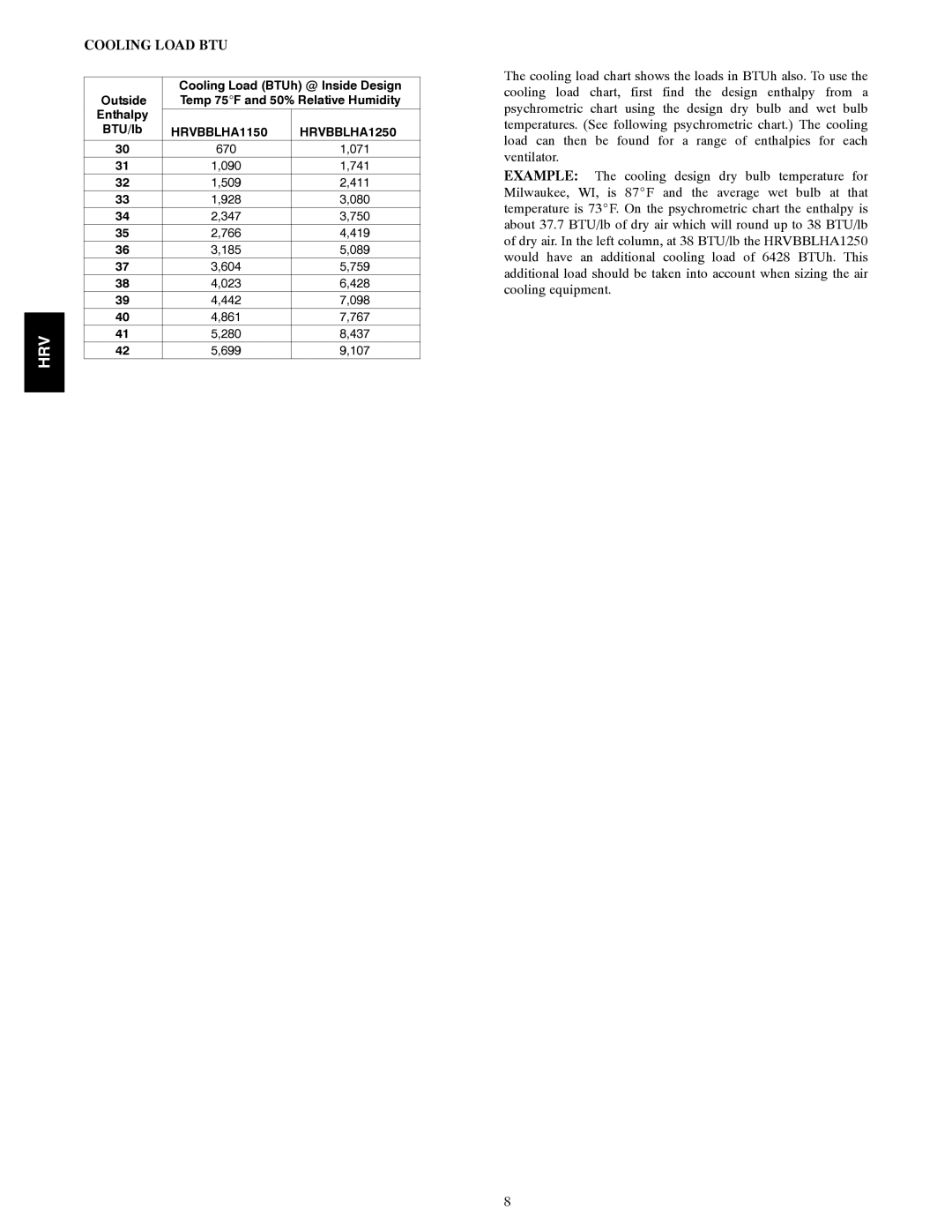HRV
COOLING LOAD BTU
| Cooling Load (BTUh) @ Inside Design | |
Outside | Temp 75°F and 50% Relative Humidity | |
Enthalpy |
|
|
BTU/lb | HRVBBLHA1150 | HRVBBLHA1250 |
30 | 670 | 1,071 |
31 | 1,090 | 1,741 |
32 | 1,509 | 2,411 |
33 | 1,928 | 3,080 |
34 | 2,347 | 3,750 |
35 | 2,766 | 4,419 |
36 | 3,185 | 5,089 |
37 | 3,604 | 5,759 |
38 | 4,023 | 6,428 |
39 | 4,442 | 7,098 |
40 | 4,861 | 7,767 |
41 | 5,280 | 8,437 |
42 | 5,699 | 9,107 |
The cooling load chart shows the loads in BTUh also. To use the cooling load chart, first find the design enthalpy from a psychrometric chart using the design dry bulb and wet bulb temperatures. (See following psychrometric chart.) The cooling load can then be found for a range of enthalpies for each ventilator.
EXAMPLE: The cooling design dry bulb temperature for Milwaukee, WI, is 87_F and the average wet bulb at that temperature is 73_F. On the psychrometric chart the enthalpy is about 37.7 BTU/lb of dry air which will round up to 38 BTU/lb of dry air. In the left column, at 38 BTU/lb the HRVBBLHA1250 would have an additional cooling load of 6428 BTUh. This additional load should be taken into account when sizing the air cooling equipment.
8
